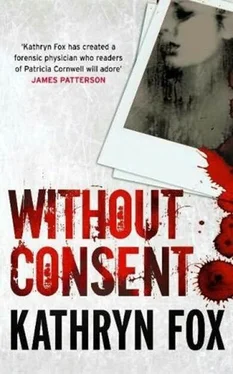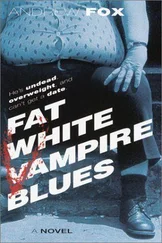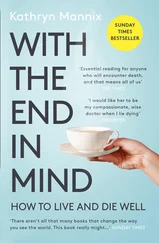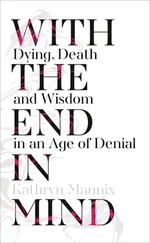She locked eyes with each person before continuing her speech. “What we estimate is that 199 out of 200 incidents will not result in a conviction. That’s a hell of a lot of scared and traumatized victims we’ve all let down.”
Lyndsay frowned. “If there’s virtually no chance of being caught, there’s no deterrent. Unless we help the police and prosecutors, we’re telling offenders that sexual assault isn’t a crime.”
Mary Singer stopped studying her fingertips. “We could start by doing away with feeding the media terms like date-rape. Rape is rape, irrespective of the social circumstances. And what does ‘domestic violence’ suggest? That violence in the home isn’t as bad as if it occurred on the street? Violence is violence. We don’t label men fighting in a bar ‘social violence.’ So why belittle violence against women? We’ve got to change a whole cultural mentality before we’ll see any difference in the crime rates of sexual assaults.”
One of the other social workers added, “What about that famous drunk actor who was killed in that fight at a party?”
Anya remembered the public outcry about the tragic loss of someone so talented. Even though he’d had a reputation for being aggressive after a few drinks, no one suggested the “celebrity” contributed to his own death by starting a fight with a blood-alcohol level multiple times the legal limit. The other man involved in the fight was charged with manslaughter. His family suffered death threats and had their lives ruined.
“Exactly,” Mary added. “Compare that to what happened to the woman who was sexually assaulted by the visiting athletes. We all remember-the media vilified her for participating in ‘group sex!’ We’re supposed to think that every woman wants to have intercourse with a pack of steroid-abusers who’d be lucky to have the combined brain capacity of an amoeba.”
“We’re missing the point,” the prosecutor interrupted. “This isn’t just about cultural change. It’s about doing more to convict the perpetrators of sexual offenses. I want to talk about ways to get more solid, irrefutable evidence I can use in court. After the recent debacle where evidence disappeared during a trial, we were sunk. We can’t rely on only one piece of DNA. We need more-a lot more-if we are to convince a jury of what took place. That’s up to you, who see the victims when examination’s most likely to yield results.”
Jennifer pushed her sleeves higher. “Recently we won a case when a physician managed to get a perpetrator’s skin cell from a bruise he caused on a victim’s neck. From now on, I want everyone to swab bruises, no matter how insignificant they seem. We could just get lucky and get saliva, skin cells, anything! I need a lot more solid evidence to convict.”
A male doctor from the rural service broke his silence. “An expert witness can refute or cast doubt on the veracity of any piece of evidence. If we’re being honest, what we collect contributes very little to your case. Even if a perpetrator leaves his wallet, fingerprints and sperm all over the scene, it’s still a case of ‘he said, she said.’ You still have to deal with the issue of consent. Without a confession, juries are going to tend more to acquittals if there’s a trial. If all a defendant needs is reasonable doubt, the odds are in his favor about two hundred to one, I’d say.”
“If you feel this negative, why are you doing the job?” Jennifer shot back at him.
“Because the victims need us. We don’t work for the police. We work for the victims. That’s why we’ll always differ on viewpoints about evidence collection.”
Well said, Anya thought.
Lyndsay Gatlow tabled the document initially addressed to Anya.
“Jennifer has already seen this letter and agrees it’s worth introducing across the state. All the doctors here are adept at colposcopic examinations and, with digital cameras, photography is easy and doesn’t require particular skill.”
“I would like to state that I fail to see the validity in Doctor Crichton’s objections to photography,” the detective inspector began. “Normally in crime, the police are the first ones called. The problem we have is that in sexual assault, others are involved first and traipse all over the evidence. From our perspective, photos of dishevelled clothing, dirt on the victim, bruises, would all help get the message across to a jury. Hell, we don’t care if the victims take the photos themselves. Something is always better than nothing.”
Although that sounded reasonable, Anya knew that there were a few problems with the theory. The first was that forensic physicians-and victims, for that matter-weren’t expert at photography and the equipment didn’t produce perfect images. Secondly, it was a lot different looking at a 2D photo without seeing the whole area first-hand. A photo could be misleading, just like a picture of a car didn’t explain how fast the car was travelling.
And normal photos didn’t exclude sexual assault having taken place. Besides, there was debate as to what constituted normal and abnormal, given that couples having consensual sex didn’t tend to agree to have their genitals photographed after the event for signs of minor injuries.
Mary Singer studied the finger where her wedding ring used to be. “These people have already been abused. Imagine the degradation and emotion involved in displaying photos of them to strangers, and maybe even the perpetrator.”
“It’s no different from presenting pictures of a homicide victim.”
“It’s very different,” Anya replied. “Dead is dead. You can’t argue over a body that death didn’t occur. The onus here is on the victim to convince a jury the assault took place. He or she is still alive, reliving the horror of the assault, for years if there is a trial, not to mention appeals. Without a victim giving evidence, there is no trial.”
“What’s the alternative, presenting nothing?” The policeman threw his hands in the air.
“No, there are other alternatives,” Anya emphasized. “We can work better with the analytical laboratories and determine the most effective means of collecting evidence when we do our examinations. Should we use dental floss to increase the yield of DNA more often? Should we be taking more swabs for the presence of condom lubricants? That’s what we need to do. There is no study in existence showing what is normal on colposcopy after consensual intercourse, so showing photographs we ‘think’ show the effects of nonconsensual sex would be laughed out of court. If you use science to prove a case, you need it to be impeccable.”
Jennifer Beck studied the papers. “I take your point. Perhaps Lyndsay’s team could perform a pilot study. But for now, why don’t you try taking photos of the victims’ state-clothing, and any visible injuries on their faces or hands. Anything that could help us.”
Mary Singer refused to look up or comment, but the others tentatively agreed.
Anya wasn’t that restrained. “If the victims are properly informed about photography and its potential uses, fewer women will consent to examinations and you’ll have even less evidence.”
“That’s a risk I’m prepared to take,” the prosecutor proclaimed.
It always astounded Anya that lawyers and police didn’t feel the need to understand the science behind the evidence they depended on. They just wanted to manipulate it for their own advantage. The lack of scientific studies on post-intercourse physical findings would sink any prosecution’s case. So Jennifer Beck wanted victims to have invasive procedures done and photographed, for no real benefit.
Beck and Veronica Slater had more in common by the minute.
Lyndsay moved on to the next item on the agenda: nurse practitioners performing sexual-assault examinations and having the doctors interpret the evidence.
Читать дальше












